Presenter: Sean Branch, D.O., Ryan Owen, D.O., Luis Soro, D.O., Christian Oram, D.O., Stephen Hemperly, D.O., and Kelly Reed, D.O.
Dermatology Program: Lehigh Valley Health Network/Philadelphia College of Osteopathic Medicine
Program Director: Stephen Purcell, D.O.
Submitted on: March 3, 2014
CHIEF COMPLAINT: rash with occasional small blisters
CLINICAL HISTORY: A 79-year-old male complained of a rash with occasional small blisters. The generalized rash began 4 months ago and was mildly pruritic. Small blisters appeared to rupture easily and leave behind superficial erosions. There was no history of any new or changing medications prior to the onset of his rash. Triamcinolone 0.1% cream helped somewhat. The rash improved with a course of oral corticosteroids but returned once the medication was completed. The patient could not tolerate methotrexate or azathioprine.
Other information: Medications: warfarin, folic acid, furosemide, diltiazem
No history of recent travel
PHYSICAL EXAM:
Large crusted erosions, erythema with tessellating scale and pink-red denuded areas on the chest, back, abdomen, arms, neck, and face.
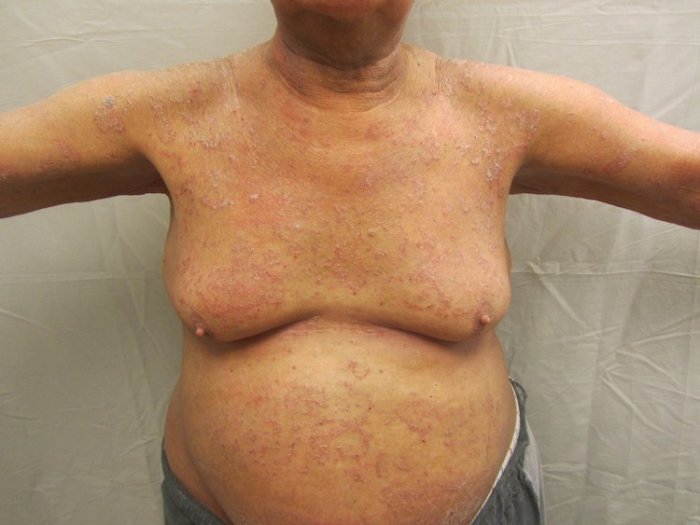
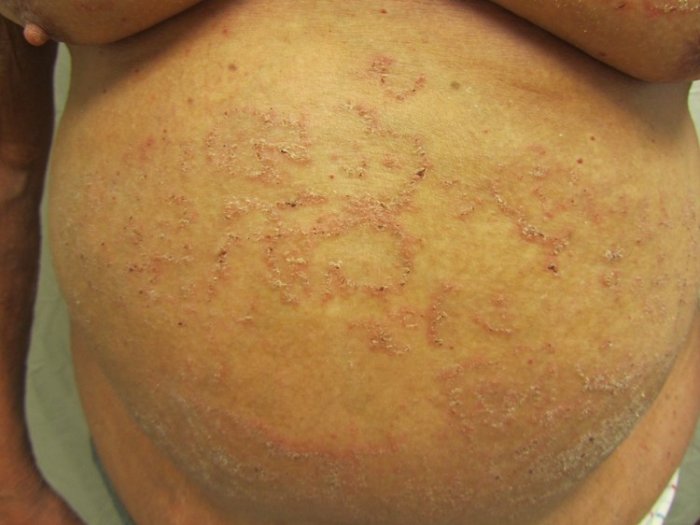
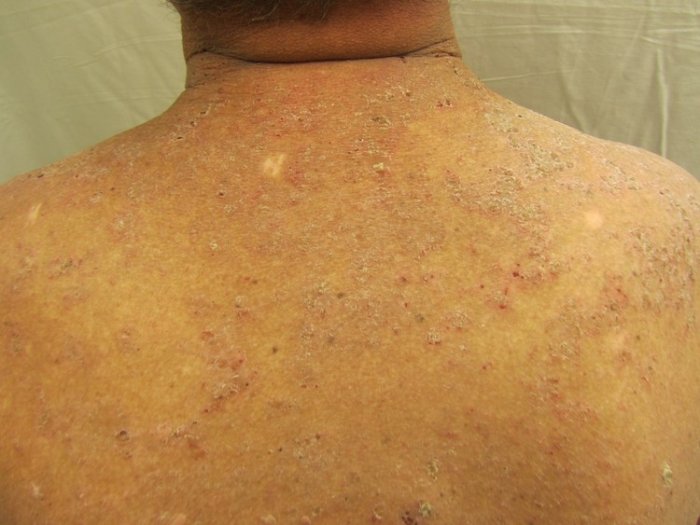
LABORATORY TESTS:
CMP, CBC, thiopurine methyltransferase (TPMT), hepatitis panel and HIV all negative or WNL except for WBC 17.98 (3.5-10.5 K/UL)
DERMATOHISTOPATHOLOGY:
Punch Biopsy, Right Lateral Arm: Subcorneal clefts and vesicles with acantholysis. In the dermis, there is a minimal inflammatory cell infiltrate. PAS and Gram stain are negative.
Direct Immunofluorescence, Right Medial Arm: Intercellular deposition of IgG and C3. No abnormal deposits of IgG, C3, IgM, IgA or fibrin in basement membrane zone, dermis or vasculature.
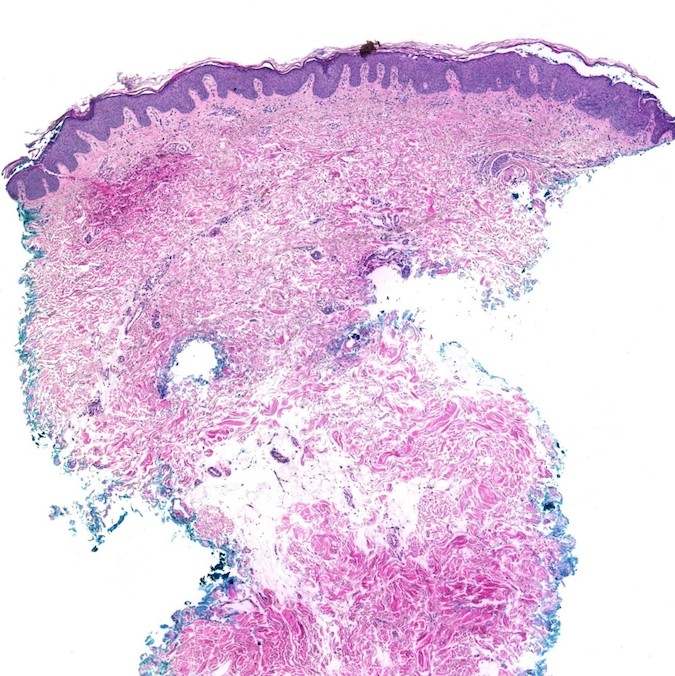
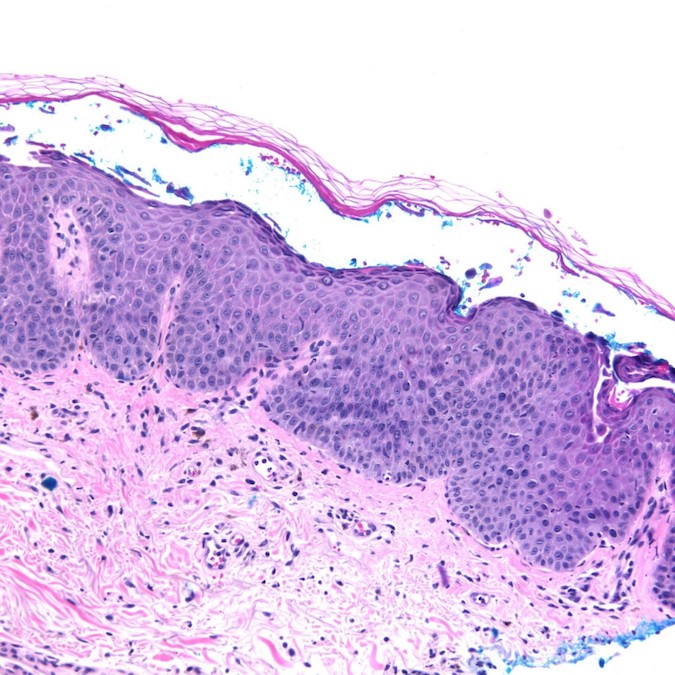
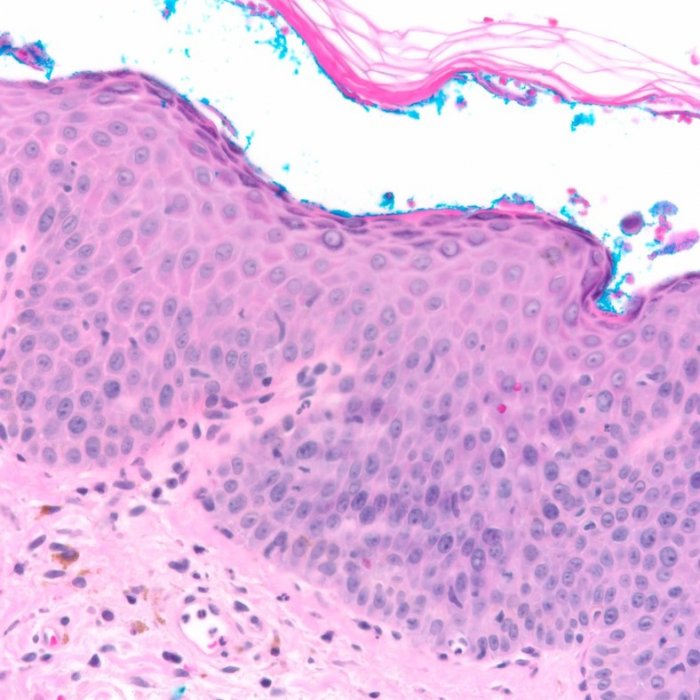
DIFFERENTIAL DIAGNOSIS:
1. Pemphigus Foliaceous
2. Asteatotic Dermatitis
3. Nummular Dermatitis
4. Transient Acantholytic Dermatosis
5. Drug Hypersensitivity Reaction




